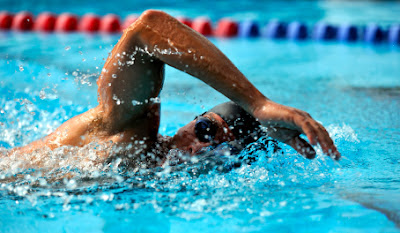Australian Swimming Culture
After the reports about the “toxic nature of Australian swimming” following their worst medal tally in the last two decades in the London 2012 Summer Olympics, the Australian swimming culture had been repeatedly slammed in the media by journalists and experts alike. However, The Land Down Under has a long and proud tradition of excellence in all things competitive that include water, especially swimming.
 |
| Man Swimming In Pool |
Even a glance at the list of winners of international swimming competitions in the past several decades reveals Australians’ undeniable swimming prowess, which is an impression somewhat tainted by the reports following the London 2012 failure, which is how Australians label winning “only” ten medals.
In this article, we examine the origin of Aussies’ superiority in water and what makes their swimming culture so strong and vibrant.
Living on the Coast
Australians’ passion for swimming, very much like their love of cars and sports in general, is in a way a natural output of the continent’s geography and climate. Because of the famous brutal conditions in The Outback and most of the continent, for that matter, most Australians live in coastal cities and near the sea.
More than 10% of Australian households have a swimming pool installed (Australian Bureau of Statistics scroll down to "Swimming Pools" ed.), with the number being as high as over 1 pool per 4 households in Northern Territory, and almost 1 per 5 in Queensland. It is no wonder that they've developed some advanced measurements of government pool regulations; households with pools having to install pool fencing or risking fines being one of them.
It is estimated that 20% of kids in Australia aren't able to swim the length of an Olympic pool(this source has moved please let me know if you find it - Ed). Compared to Australia, 40% of British and 40% of Caucasian American kids can't swim, while the number of Hispanic and African American kids that can't swim in the United States rises up to an astounding number – 60% and 70% respectively.
As Rhys Mainstone, one of the most prominent active Australian open water swimmers says, this is the reason most kids learn to swim and generally spend a lot of time near or in the water at a very young age. “It just a way of life, I’d say”, Mainstone concludes. The sheer abundance of water and the mostly hospitable coastline provide Australians with the perfect conditions for moving the boundaries of competitive swimming. However, as we all know, simply having the opportunity is very rarely enough for achieving excellence, let alone staying in the very top of competitive swimming for decades. So, how do the Aussies hone?
The Superstars & The Craziness
First of all, having such a glorious tradition in any sport is sure to attract youngsters eager to follow in the footsteps of the likes of Shane Gould, Ian Thorpe, Dawn Fraser or Trent Grimsey. Having current champions to look up to is also very helpful in attracting kids to any sport, especially when those athletes are superstars in their own right, as is the case in Oz.
The fact that swimmers in Australia are hailed as sports heroes as much as footballers in Europe or the USA is by itself an indicator of how seriously Australians take swimming. The other part of the equation is the institutional support necessary for the development of any competitive sports, provided in the form of countless swimming events across Australia and especially along the coast, some of them pretty unconventional, to say the least.
Such is the case with swimming with the dwarf minke whales that take place during June and July when between 60 and 80 of these gentle marine giants visit the warm waters of Queensland around the Great Barrier Reef going about their business, uncannily eager for human company.
Education
However, as every sports lover across the globe knows, the world of modern professional sport can be brutal. In order to succeed on the highest level, and that is the only level Australian sports lovers have heard of, at least when swimming is concerned, one has to train like a professional from a very young age. That is why parents have a huge role in the development of a young swimmer, much more so than in many other sports.
Again, the tradition and the swimming culture plays a big, although somewhat indirect part in this stage of the development of a young swimmer. In a country where swimming excellence is considered a part of national heritage, every parent knows a thing or two about it, making them much more likely to encourage their child to give it a go, which certainly wouldn’t be the case if skiing was considered.
There you have it – the three pillars of Australian swimming as we see them. Although these can be dissected and analyzed further, of course, the heritage, institutional support, and its nature are what drives Aussies’ thirst for gold medals and makes them such great swimmers. One could say it simply comes naturally to them.
Bio
Mark is an Australian father, a husband, and a builder. He is a bit of a safety freak and in order to keep his kids safe, he rigidly follows all pool safety regulations for his pool.

No comments:
Post a Comment